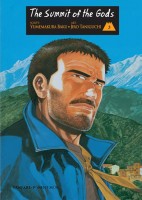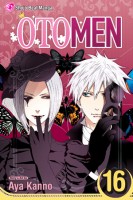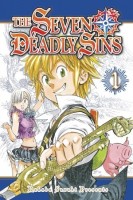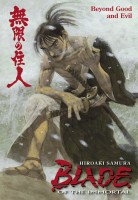 Author: Baku Yumemakura
Author: Baku Yumemakura
Illustrator: Jiro Taniguchi
U.S. publisher: Fanfare/Ponent Mon
ISBN: 9788492444335
Released: June 2012
Original release: 2002
Awards: Angoulême Prize, Japan Media Arts Award
Based on an award-winning novel by Baku Yumemakura, The Summit of the Gods is a five-volume manga series written by Yumemakura and illustrated by Jiro Taniguchi. The manga itself has also won several awards, including a Japan Media Arts Excellence Award and an Angoulême Prize for Artwork among other honors. The Summit of the Gods, Volume 3 was originally released in 2002 in Japan. The English-language edition was published ten years later in 2012 by Fanfare/Ponent Mon. The Summit of the Gods is one of my favorite manga that Taniguchi has worked on, not to mention one of my favorite manga series in general. It’s an engaging story with compellingly flawed characters and its artwork is fantastic. Two years passed between the release of the second English volume and the third. Though I wish it could be published more quickly, The Summit of the Gods is a series worth waiting for. The books have a larger trim size than most other manga being released, which allows Taniguchi’s artwork to really shine, and the hefty page count allows the storytelling room to breathe, too.
Makoto Fukamachi has returned to Nepal, continuing his search for the legendary mountain climber Jouji Habu, who is now going by the name of Bikh Sanp. Habu may have found the camera carried by George Mallory on his last, fateful ascent of Mount Everest. The camera and its film could hold the answer to one of the climbing world’s greatest mysteries: who the first person to stand on the summit of Everest was. While researching the camera, Fukamachi became more and more interested in Habu himself, but finding a man who doesn’t want to be found proves to be an extremely difficult task. It is only after Ryoko Kishi arrives in Kathmandu that Fukamachi is able to make any headway with his investigation. Her brother died in a climbing accident, and Habu carries a tremendous amount of guilt because of it, but Ryoko was also one of the people closest to Habu in Japan. However, even she hasn’t heard from him in more than three years. As Fukamachi and Ryoko’s search for Habu progresses, others become curious about him and the camera as well, which only complicates matters further.
Compared to previous volumes in the series, except for the opening chapter which focuses on the many failed attempts to reach the summit of mount Everest before success was achieved, The Summit of the Gods, Volume 3 devotes less time to mountain climbing and more time to Fukamachi’s investigation and its unfortunate fallout. The emphasis in this volume has moved from the mountains and the wilderness to the surrounding cities and villages. While I do miss the drama and grandeur of nature so expertly captured in Taniguchi’s artwork, his portrayal of Kathmandu, Patan, and the various Sherpa villages is equally impressive in the amount of detail included. The city- and villagescapes are just as important as the landscapes. Aspects of Nepalese politics and culture are incorporated into the series as well. But even though climbing isn’t always at the forefront of this volume of The Summit of the Gods, it still plays and extremely important role in the story and it is vitally important to the characters as well.
While Fukamachi may be the protagonist of The Summit of the Gods, the series is really more about Habu and his story. As he has proved time and again, Habu is an incredible climber. In the third volume he pulls off an astonishing rescue—scaling a cliff with one arm while carrying another person—that leaves the others in awe of him. This is not the first, and I am sure it will not be the last, amazing feat that Habu performs. He is so singly devoted to and passionate about climbing that he has made many sacrifices in his life just so that he can continue to push himself to his limits. When it is finally revealed, the ultimate goal that Habu has set his sights on is enormous, beyond anything that anyone else has ever seriously considered attempting. Habu both intimidates and inspires Fukamachi, forcing Fukamachi to evaluate and reevaluate himself and his own capabilities and desires. The Summit of the Gods, Volume 3 is a critical turning point in the development of the series’ characters and plot, bringing a resolution to one story arc and beginning the next.







